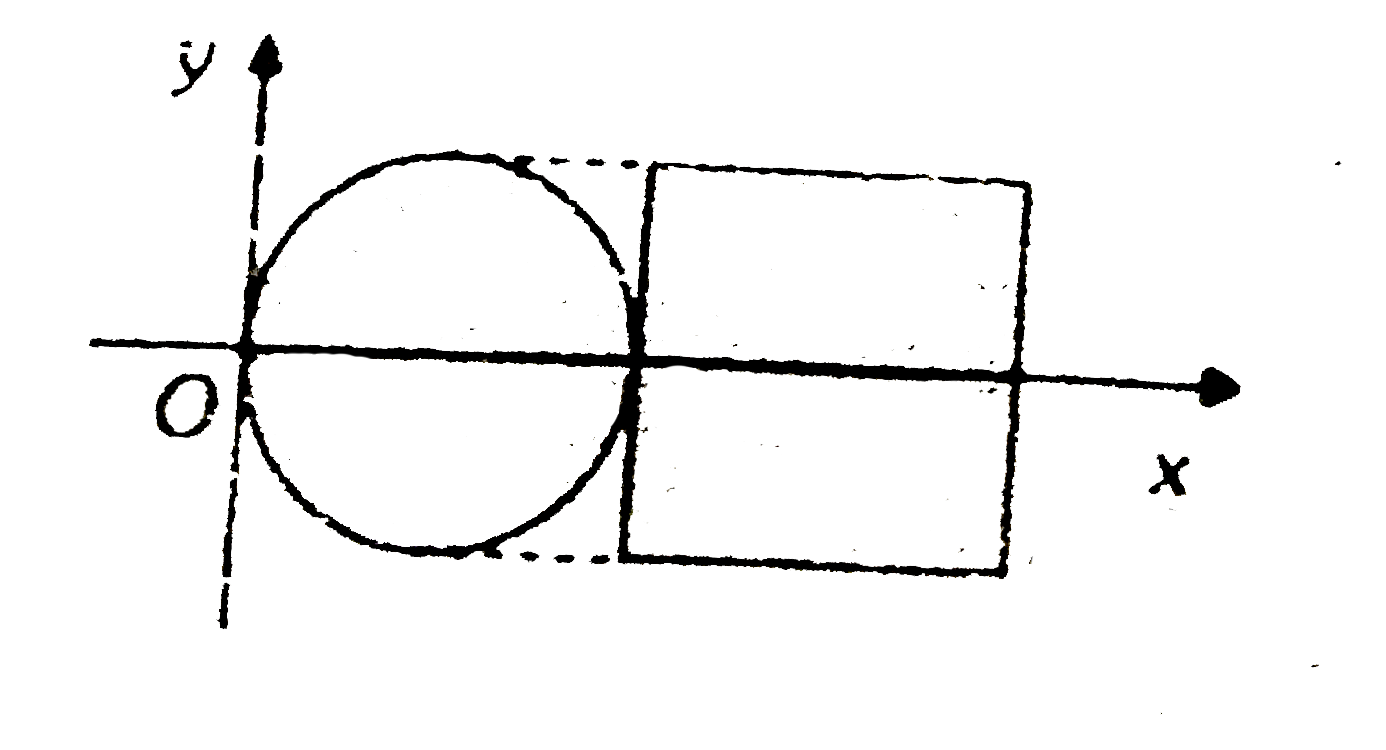The difference between the two specific heat capacities (at constant pressure and volume) of a gas is 5000J kg−1 K−1 and the ratio of these specific heat capacities, i.e., CV and CP is 1.6. Then CV and CP
To find mass center the component bodies are assumed particle of masses equal to corresponding bodies located on the respective mass centers. Then we use equation to find the coordinates of the mass center of the composite body.
To find mass center of the composite body, we first have to calculate mases of the bodies, because mass distribution is given.
If we denote surface mass density (mass per unit area) by σ, masses of the bodies are
Mass of the diskmd=Mass per unit area×Area=σ(πr2)=σπr2Mass of the square platemp=Mass per unit area×Area=σ(4r2)=4σr2Location of mass centre of the diskxd=Centre of the disk=randyd=0Location of mass centre of the square plantexp=Center of the surface plate=3randyp=0
Using eq. , we obtain coordinates (xc,yc) of the composite body. xc=mdxd+msxsmd+ms=r(π+12)(π+4)
and yc=mdxd+msxsmd+ms=0
Coordinates of the mass center are (r(π+12)(π+4),0)

Related Playlists
- BOOK - ALLENCHAPTER - CENTRE OF MASSEXERCISE - EXERCISE-I40videos
CENTRE OF MASS
- BOOK - ALLENCHAPTER - CENTRE OF MASSEXERCISE - EXERCISE-II43videos
CENTRE OF MASS
- BOOK - ALLENCHAPTER - BASIC MATHEMATICS USED IN PHYSICS &VECTORS EXERCISE - EXERCISE-IV ASSERTION & REASON11videos
BASIC MATHEMATICS USED IN PHYSICS &VECTORS
- BOOK - ALLENCHAPTER - ELASTICITY, SURFACE TENSION AND FLUID MECHANICSEXERCISE - Exercise 5 B (Integer Type Questions)3videos
ELASTICITY, SURFACE TENSION AND FLUID MECHANICS
Knowledge Check
- Question 1 - Select One
If CpandCv denoted the specific heats of unit mass of nitrogen at constant pressure and volume respectively, then
ACp=Cv=R28BCp−Cv=R7CCp−Cv=R14DCp−Cv=R - Question 1 - Select One
The ratio CpCv=γ for a gas. Its molecular weight is M. Its specific heat capacity at constant pressure is
ARγ−1BγRγ−1CγRM(γ−1)DγRMγ−1
Similar Questions
Define molar specific heat capacities of a gas at constant pressure and constant volume. Why are they called 'principal specific heat capacities?
View SolutionFor a gas the differce between the two specific heat is 4150J/kgK. What is the specific heat at constant volume of gas if the ratio of sepcific heat is 1.4
View SolutionA gas has more than one specific heats, whereas a liquid and solid have only one. Why?
OR
Why gas has two principle specific heat capacties.View SolutionIf the specific heat capacity of air at constant pressure is 993Jkg−1K−1 calculate specific heat capacity at constant volume ? Density of air at N.T.P. is 1.293Kg/m3. [E.Q.)
View SolutionState two differences between "Heat Capacity" and "Specific Heat Capacity"
View SolutionIf CpandCv denoted the specific heats of unit mass of nitrogen at constant pressure and volume respectively, then
View SolutionThe specific heat capacity of hydrogen at constant'pressure and constant volume are 14280Jkg−1K−1and10110Jkg−1K−1 respectively. Calculate the value of the universal gas constant.
View SolutionSpecific heat capacity at constant pressure and at constant volume for nitrogen are respectively 1040Jkg−1K−1and743Kg−1K−1. Calculate the universal gas constant ?[E.Q.]
View Solution

